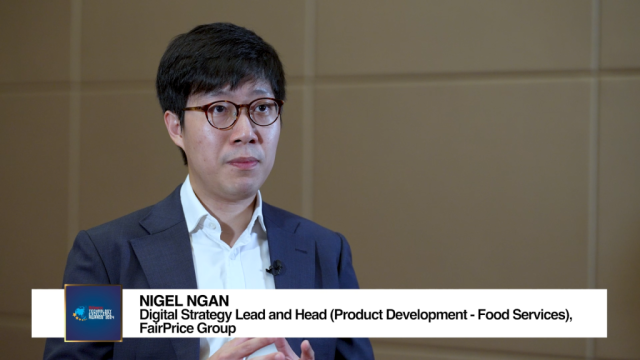
Getting through the backdoor in branding
What do you do when you are driving down a street and suddenly a brick wall looms in front of you? You try to go around it if you can, right? No point driving straight into the brick wall unless you happen to be in a 70-tonne Sherman tank.
The same with branding. Not everyone has a brand that is the equivalent of a 70-tonne tank but almost everyone faces entrenched competition that is like a solid brick wall, especially if you are a new kid on the block.
But surprisingly, most brands do the equivalent of driving straight into a brick wall. They try to take their entrenched competitors head on which is suicide! Maybe the management of these brands watched too many Rambo movies.
The Rambo approach is macho. It is sexy. It sounds so noble, so valiant, so heroic but in the market place, the Rambo approach gets you killed.
I have often written about the need for a brand to be differentiated in order to be strong. If you are not differentiated – if nobody can tell the difference between you and your competitors – they will just buy from whoever is cheaper.
If you can sell cheap forever, then go ahead and compete on price. Companies with structural cost advantage that can sell cheap can become very successful brands as well. But most companies don’t have structural cost advantage so they have to find a way to differentiate. I suspect that most of you are the same.
One of the easiest ways to differentiate your brand is to take the opposite position from the leading brand, provided of course, nobody has done that already. This is great for brands that are not the first in the market. If you are first into the market like IBM in computers, Microsoft in operating systems, Coca-Cola in soft drinks, Mercedes-Benz in cars, you have many options on how you want to position the brand. If you are not the first, and the first brand has built a strong position, then the best thing to do is take the opposite position. But taking the opposite position is sometimes not very attractive or lucrative. Let me give you an example.
Selling To A Market Nobody Wants
What is Dell? One of the most successful computer companies in the world. Dell has been No. 1 or No. 2 for the longest time. What made Dell so successful? You probably know that Dell invented a new category – the first computer company to sell directly to consumers, cutting off the expensive middlemen and that resulted in great savings for consumers. But Dell’s strategy goes a lot deeper than that.
Now, when Dell first entered the market, they were faced with two categories of computer users – businesses (corporate users) and consumers (home users). Everybody was going after the corporate users because they represent a much more lucrative segment. One account could generate hundreds of thousands to millions of dollars in sales. In contrast, one consumer account probably gives you a few thousand dollars in sales. It’s a no-brainer. Go after the big corporate accounts first.
So, why did Dell target the consumer market? Dell understood the need for differentiation and they understood that the best way to differentiate yourself is by taking the opposite position. IBM & Gang were all going after the corporate sector so Dell took the opposite position by going after the consumer sector. IBM & Gang had (and still have) multiple layers in their distribution channels which add to complexity and cost. Dell took the opposite position by selling direct to consumers. All the middle layers (distributors, agents, retailers, etc) were cut out. Those efforts in differentiating Dell made it stand out from the crowd. It generated a lot of attention from the media and from the public. Dell became successful.
Dell’s Back Door
But the most amazing thing is that by targeting the consumers, Dell actually found a back door into those big corporate accounts! Today, Dell sells a large percentage of its computers and servers to corporations around the world because of this back door which nobody else realized at that time. I am not sure if Dell itself realized how brilliant their strategy was or whether they stumbled upon this by accident but it was brilliant nevertheless, not just in those early days when Michael Dell and his friends were working from the garage of Michael’s parents’ home but even by today’s standards.
You see, consumers actually live a double life. They may be consumers but they most likely also work for an organization somewhere. Now, in these organizations that they work for, they are either decision makers or influencers. Dell’s early customers bought its computers probably because of the tremendous cost savings. After all, in those days, people probably thought that you need a better computer at work than at home. (These days, most people I know have better computers at home than at work.) So, they bought a cheap computer for their home use. They bought Dell.
And somewhere along the line, they discovered that Dell was actually a very good computer and they also found that Dell’s customer and technical service were excellent despite the fact that they have to get help over the phone instead of having a technician to help them in person. (I know Dell’s service quality has been criticized a lot lately but it must have been pretty fantastic in the past or people wouldn’t have bought Dell.) This positive experience with Dell made these consumers think that maybe they could use Dell computers at work. So, they either made the decision to buy Dell for the workplace or they recommended Dell to the decision makers in their companies. Because of this, Dell computers gradually found its way into companies.
Dell didn’t go head on with IBM, Compaq, HP, Texas Instruments, Acer and the rest. Dell did the sneaky but smart thing. They entered through the back door. If they had gone head to head with IBM, they would have been clobbered. That’s what 800-pound gorillas do when they are annoyed with you.
Don’t Pick Somebody Your Size To Fight
Wal-Mart is the world’s largest retailer with a turnover of over US$200 billion a year. Wal-Mart also found a back door into the retailing market. When Sam Walton first started, he decided that Wal-Mart will not go into the big cities where there are many entrenched competitors who could easily kick the young company around like a rag doll. So, Wal-Mart took the opposite position. They went into towns where the population is less than 50,000 initially. This has many advantages.
First, the big boys at that time couldn’t be bothered with small towns like the ones that Wal-Mart targeted. Second, the main competition is the Mom-And-Pop store that Wal-Mart can easily beat. This smacks of bully boy tactics to some of you but as my business ethics professor used to say, “Treat what is legal in business as ethical. If it is legal and you don’t do it, your competitors will and they will win. Why allow them that luxury?”
Because of this strategy of taking the opposite position, Wal-Mart managed to build up its economies of scale quietly over time which gave them tremendous bargaining power with suppliers and that drove their costs down so much that when they ventured into the bigger cities, the established players could not match Wal-Mart’s “Everyday Low Prices”. They couldn’t block Wal-Mart because Wal-Mart did the sneaky but smart thing. They found a back door into the big cities. They found a back door that opened up the whole of USA to them.
What Back Door Can You Find?
What Dell did provides some valuable lessons for management and marketing managers everywhere. Don’t drive straight into that brick wall. Try to find ways around it. If there is a segment of the market that you cannot access because it is dominated by powerful players, try to find a back door. That back door could be anything. You have to find it.
1. Start thinking of what market you actually want to end up with.
2. Then start thinking about all the roadblocks (competitors) that are in the way.
3. Finally, try to think of a back door that you can use.
This is something that my colleagues and I do on a daily basis – we try to help our clients find back doors because no matter how big our clients are, they always face somebody bigger when they venture into international markets so they have to find back doors sometimes. You may find it hard to believe that clients with a turnover of over S$1 billion might need a back door but that’s what you do when your international competitors are S$6-billion giants.
Jacky Tai, Principal Consultant, StrategiCom
























 Advertise
Advertise









